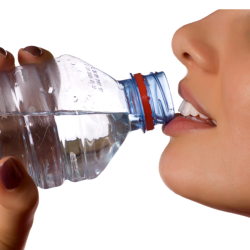Every dog needs exercising daily. Just keep in mind that exercising is not a one-size-fits-all when it comes to dogs.
The amount of exercise varies according to dog type. A little dog can’t exercise for as long or hard as a bigger dog. So don’t take your Chihuahua and your Rottweiler on the same run and expect the little one to keep up.
While no written guidelines exist, your veterinarian can give you sound advice on what is appropriate for your dog(s).
Just like you, your dog should have a physical and a clean bill of health before starting an exercise program.
Types of Exercise
There are several different types of exercise you can do with your dog. What comes to most peoples’ mind is walking or running. And while that is two popular types of exercising, there are several more, such as:
- doggy bootcamp
- chase me
- agility workout
Doggy Bootcamp
Doggy bootcamp is a combination of playing fetch with your dog and working out at the same time. Check to see if you can find a bootcamp already established in your area by searching Google; if none is available, start your own.
Basically, you throw a favorite toy of Fido and while he is running out to get it and bring it back, you are static in-place exercising, such as doing push-ups, sit-ups, squats, jumping jacks, jumping rope, etc.
If your doggy bootcamp is in a public park, you may soon find yourself in company of other dogs and owners who want to do the same thing.
Chase Me
This routine is a moving tug-of-war between you and your dog. Place two objects as markers, such as water bottles, 10 feet or so apart. With your dog’s favorite toy in hand and your dog trying to wrestle it from you, side shuffle (you in the squat position) back and forth between the two markers. Do these as many times as you can.
Agility Workout
As a dog owner, you have probably watched dog agility trials on TV. Now it is your turn to take the leash in hand and do your own agility workout. If no established course is in your area, make your own out of common items found around the house. Your dog will enjoy the challenge and both of you will get exercise at the same time.
No Dog – No Problem
If you don’t own a dog, there are a couple of ways you can still workout with one. Dog shelters welcome responsible volunteers to check out a dog and exercise it. Maybe you have a home-bound neighbor that can’t exercise his or her dog. Ask if you can take their dog out for some exercise.
Keep in mind that getting outdoors is not only exercise for a dog, but an enhancing social interaction for them. With their keen sense of smell, they are enjoying the outing even more than you while you’re conquering many of the 10,000 steps a day that you need to keep health and fitness in check!
The Benefits of 10,000 Steps Per Day
To get the point across as to why 10,000 steps a day are important, chances are that you are reading this from a laptop or desktop computer. And that is one of the dangers of modern day society. Our work and personal lifestyle habits tend to lead toward a very sedentary lifestyle which centers on a lot of sitting.
With heart disease, obesity, diabetes and even stroke and heart attacks directly correlated to a sedentary lifestyle, it is important that you understand the benefits of walking at least 10,000 steps per day.
How have fitness organizations and experts arrived at this 10,000 steps figure? With the average adult human covering 2.5 feet with every step, this means it would take a little over 2,000 consecutive steps to cover 1 mile in distance. Health professionals have stated that 5 miles of walking spread out over the course of a day leads to a significantly healthier individual, and that is where the 10,000 step number originated.
The good news is you do not have to walk this distance at one time. And if you maintain the average 3 to 4 mph brisk walking rate which most adults can, this means that between 80 and 100 minutes is all which is required to cover 5 miles, or 10,000 steps a day.
Taking your dog for a nice and enjoyable walk can burn through one third or more of those steps easily. About a mile and a half will take care of that quite quickly.
How Do You Count and Estimate Your Steps?
But without counting, how do you know just how many steps you are currently walking throughout the course of your day? If you sit down a lot, at work, at home, in your car, you only average between 1,000 and 3,000 steps a day.
To keep heart disease, obesity, several cancers and an early death at bay, this simply means adding an extra 7,000 to 9,000 steps to your daily routine. Time-wise this is just another hour of walking, and you can spread that out over the course of your day.
The benefits of those 10,000 daily steps are plentiful. The American Heart Association believes that 10,000 steps is a magic metric the average person can use to increase heart health while simultaneously decreasing the risk of developing heart disease.
The Surgeon General also agrees with this figure, and if it only helps you combat heart disease, the number one killer of both women and men in America every year, it would be a worthwhile undertaking. But the benefits of 10,000 steps per day also include an immune system boost, reduced waist size, lower body mass index, increased energy and less risk of developing diabetes.
Purchase a Low Cost Pedometer for Easy Tracking
Are you ready to get started yet? One of the advantages of walking 10,000 steps per day is that literally anyone can do it, and if you need to purchase a pedometer to keep yourself on track, a very low-cost step that you should take. You and your furry friends will look and feel better, and allow you both to live a much longer and happier life when you incorporate the 10,000 steps per day program into your daily life.
You can learn more about “How Much Exercise Do I Need Each Day” and discover many methods of exercising but the thing is that anyone can benefit from the act walking and for most people, it’s something they can accomplish.









